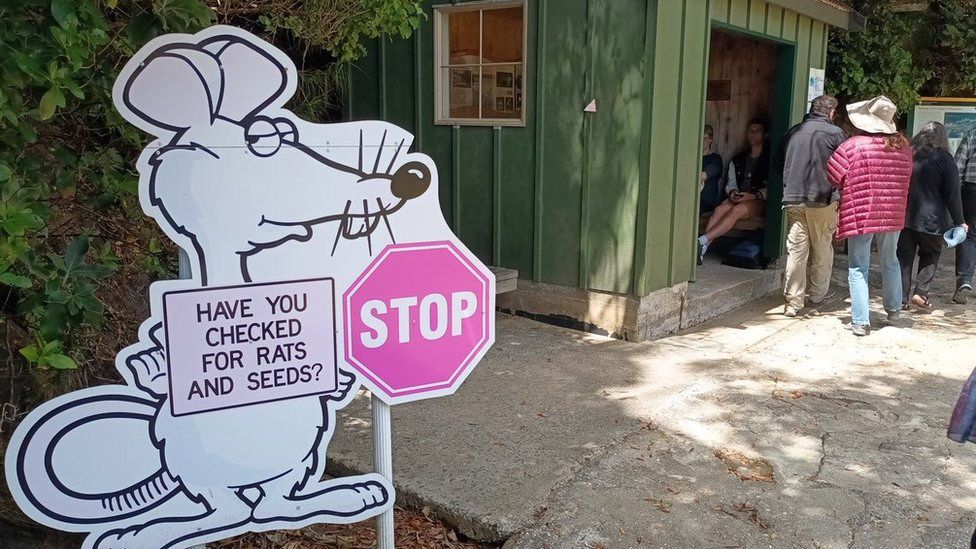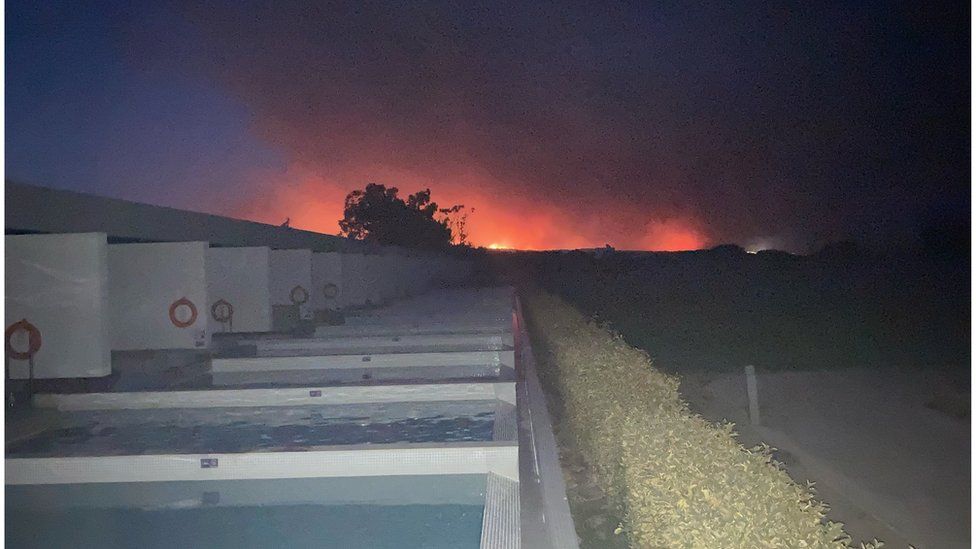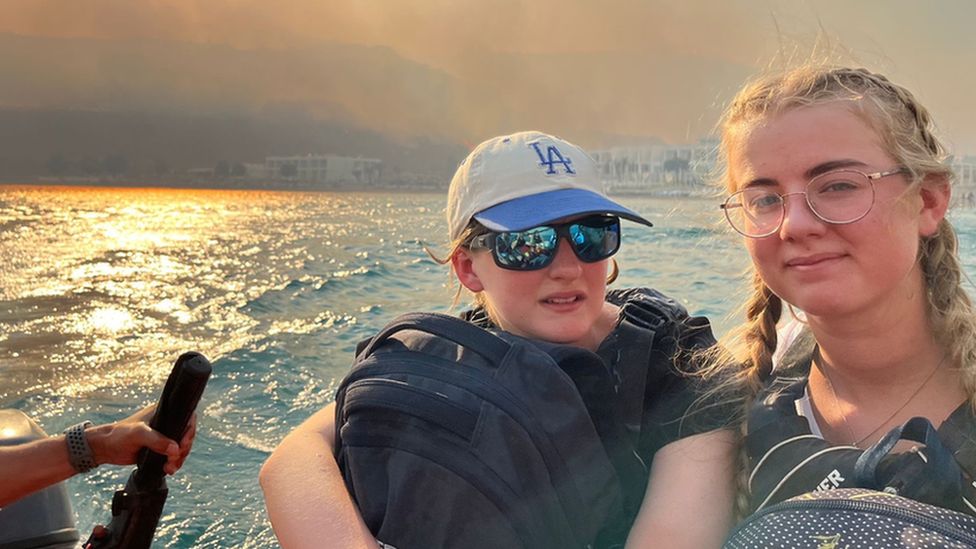The wildlife enthusiasts assemble in Miramar, a picturesque peninsula, on a sunny Sunday morning. They have been sent on a killing spree.
Predator-Free Miramar aims to eradicate all rats from this region of Wellington, the capital of New Zealand, in order to protect the local bird population.
The volunteers are given peanut butter, which makes excellent rodent bait, and poison after donning hi-vis jackets.
Each person is given a patch to patrol, where they will inspect poisoned bait boxes and coil traps. Dan Coup, who is in charge of the group, says, "Good luck, fellows.". .
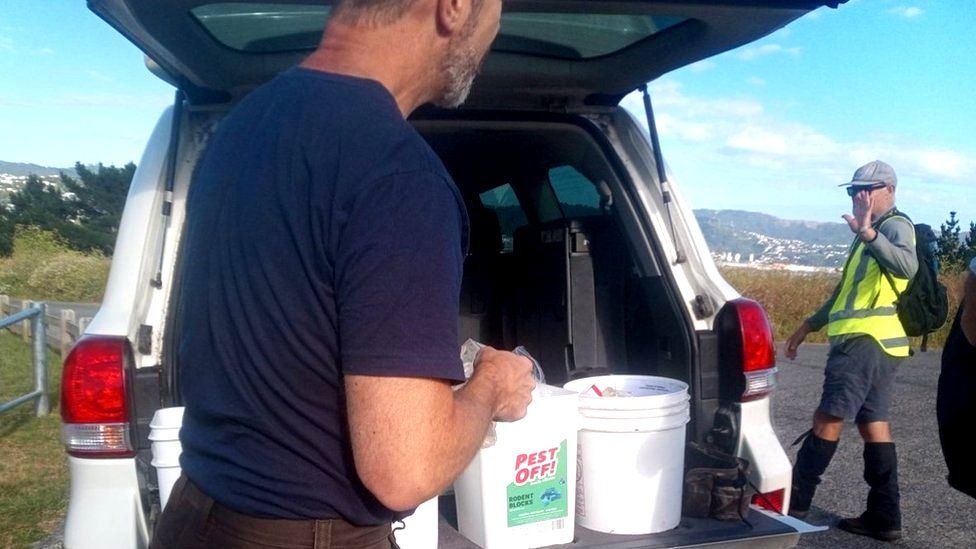
A GPS app directs Coup through the forest to the equipment he needs. He changes the bait and updates the information on the app for each one. None of them reveal evidence of rat activity.
He feels the vibration of his phone as he searches the ground for droppings and other hints. A dead rat in a trap was the subject of a participant's WhatsApp group post. .
It's unfortunate to hear this. Coup sighs, "Dave will feel good that he caught it, but we feel sad that there is still a rat.".
Rat and other predator eradication is a priority for Miramar as well as for the entirety of New Zealand. The task should be finished by 2050, according to the government.
It's a big task. South Georgia, a 170 km (105 mi) long island in the South Atlantic, is the largest area where all rats have been eradicated. Conservationists in New Zealand are optimistic that the feat can eventually be accomplished in a region larger than the UK.
Others bring up issues with application and morality.
A distinctive ecology sits at the project's core. Long before mammals evolved, 85 million years ago, New Zealand split from an ancient supercontinent. Birds could build their nests on the ground or go without wings in the absence of land predators.

The final significant landmass to be populated by humans was New Zealand. Mice and Pacific rats were introduced in the 13th century by Polynesians. Six hundred years later, larger mammals that ate helpless birds were brought in by Europeans. Since human settlement, almost a third of the native species have disappeared.
The endeavor to save the others is not new. Rats were eradicated from small offshore islands by conservationists in the 1960s. But it wasn't until around 2010 that confronting predators became popular.
James Russell, a biologist at Auckland University and the project's spokesman, claims that it "bubbled up" and turned into a national symbol.
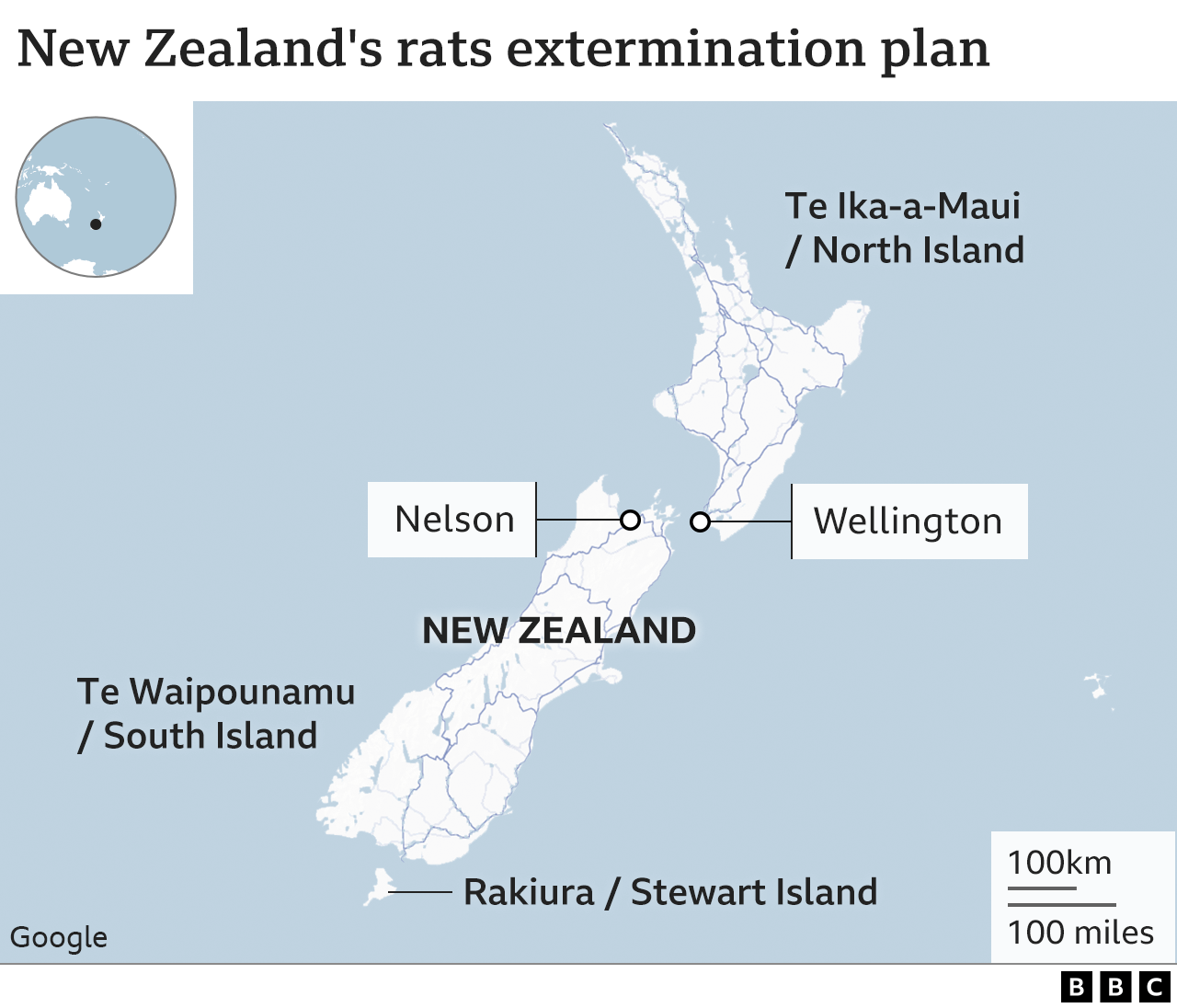
The development of infrared cameras, according to Russell, was one factor. Large herbivores like deer and goats were the most obtrusive pests and the targets of significant culls in the 20th century. Wildlife enthusiasts, however, began to be able to demonstrate what small mammals did at night starting in the 2000s. .
Pictures of rats snatching eggs and chicks were widely circulated. Russell explains that the video "was inspiring.". At the time, an ecologist estimated that predators were taking 26 million birds out of New Zealand every year. .
The idea of a nation free from predators gained popularity in 2011 thanks to renowned physicist Sir Paul Callaghan. It could be done, according to Russell and other young conservationists, given enough funding and mobilization. .
Then, politicians joined in. The three types of rats (Pacific, ship, and Norway), mustelids (stoats, weasels, and ferrets), and possums were designated as the worst predators for eradication in 2016 by a law. The inspirational deadline was the middle of the 20th century.
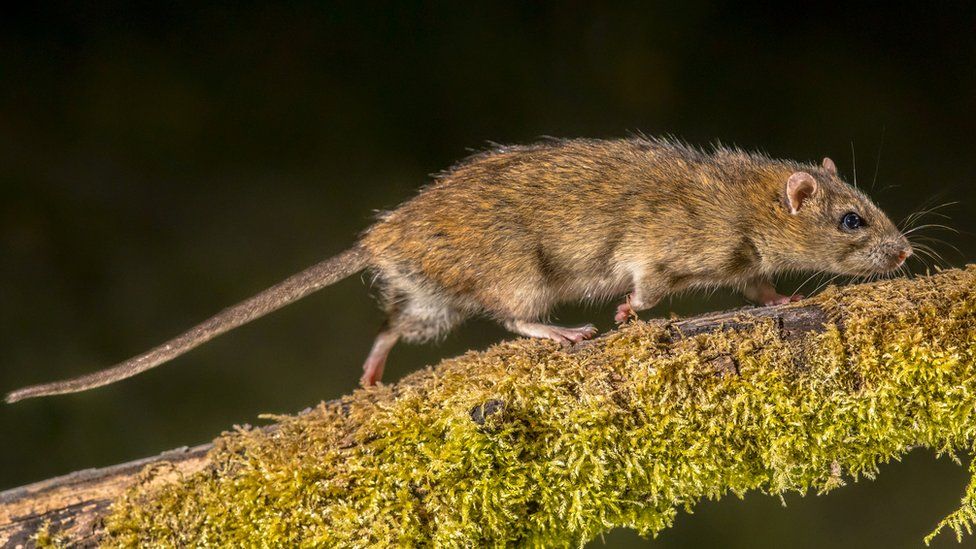
A public organization called Predator Free 2050 Ltd was created to direct public and private funding to regional projects that would test eradication methods.
Predator Free Wellington is the most aspirational of them all. It aims to eradicate a variety of pests, especially rats, which thrive in urban settings, in a city of 200,000 people.
The 36-person project team has transformed amateur rat-catchers into qualified exterminators. They were given anticoagulant poison, which is far more efficient than traps, as well as a GPS app that stores data from every device in real time. .
Hotspots now have cameras installed. Director of Predator Free Wellington James Willcox asserts, "If any rat shows up, my planning team knows where they want to put their resources. " .
Each dead rat that is discovered is taken to the lab for an autopsy. This is essential because anticoagulants kill gradually by design. Rats are social, intelligent creatures that learn to stay away from things that will obviously harm them. .
Predator Free Wellington requires the autopsies to evaluate effectiveness as a poisoned rat perishes outside of the bait box.
To determine whether they were killed by toxins, Willcox says, "We cut them up.". Are we pursuing a single rat or a family of rats? These are additional questions that need to be answered.
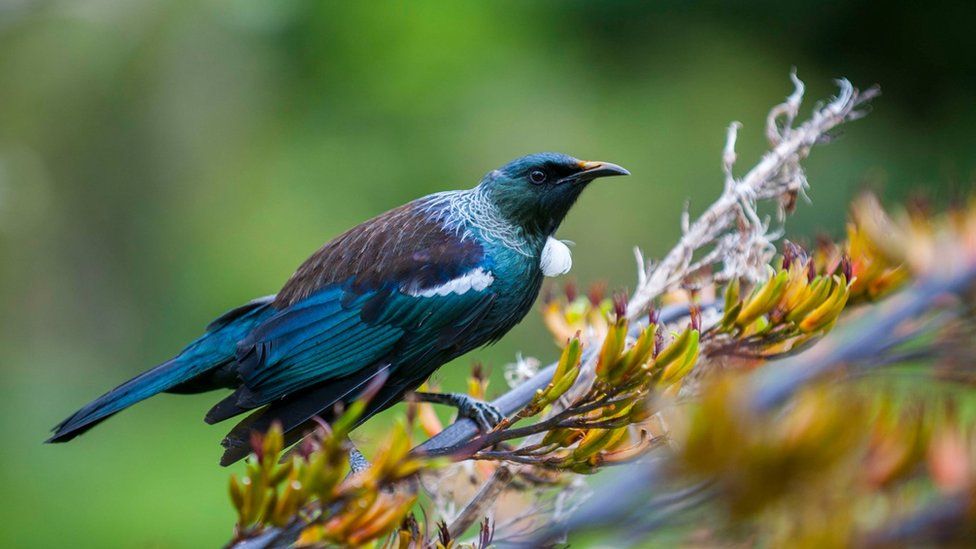
The city's campaign to combat predators has been led by Miramar. Rats are now extremely uncommon on the peninsula, and numerous native birds have recovered. The tui, whose population in Wellington had decreased to just a few pairs in 1990, is a distinctive bird with an all-pervasive call.
According to longtime Miramar resident Paul Hay, "In our back garden we now have tui flying over all the time.". "The bird population has grown significantly, particularly over the past five years. " .
Predator-proof fencing is an earlier conservation idea that Wellington pioneered that benefits the city-wide effort.
A mile outside of the city center, as the tui flies, the first urban ecosanctuary in the world opened its doors in 1999. It is enclosed by an 8 km fence and is now known as Zealandia. Visitors are required to check their bags and go through a two-door barrier that looks like an airlock. .

Behind such strict biosecurity measures, once-rare birds have not only survived but are also dispersing to nearby neighborhoods.
Around New Zealand, there are now numerous fenced sanctuaries. Three times the size of Zealandia, the largest is located in Nelson, South Island, and is called Brook.
The area was pest-free for a year following the installation of a predator-exclusion fence in 2016. Keeping them out is the current challenge. .
The key is to maintain constant attention. A bird of prey may unintentionally drop a rat inside; a tree may fall on the fence, allowing a weasel to enter.
The fence's warning system will activate if it is damaged in any way. Nick Robson, Brook's operations manager, says that if the alarm goes off in the middle of the night, one of the employees will go check it out.
Ink pads and cameras record any intrusions and notify staff. The best friend of man, however, is the ultimate detection device and the worst enemy of the predator. Dogs are specially trained to find some pests while ignoring others, according to Robson. It's possible that a dog can find rats while our technology hasn't. ".
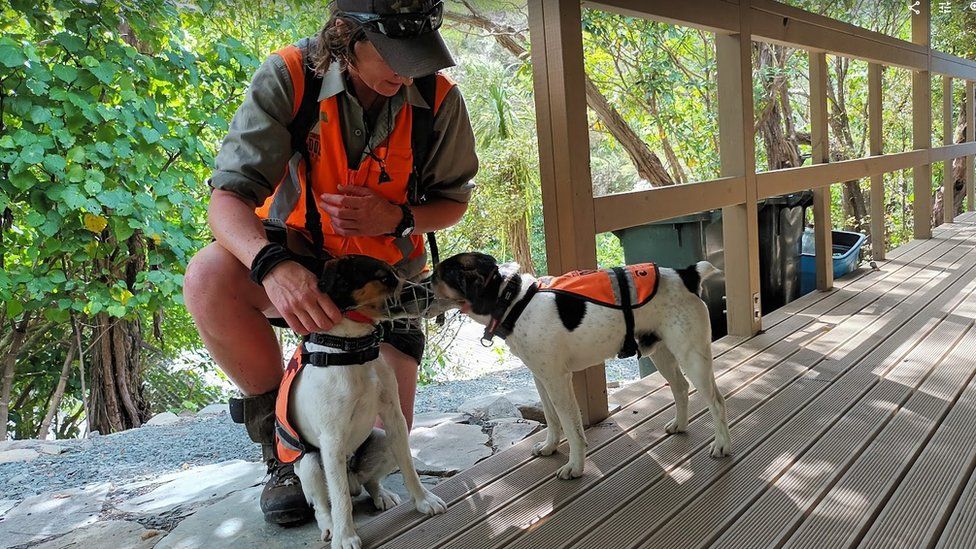
Particularly for offshore islands, preventing reinvasion is a concern. The biggest of these is Stewart Island, also known as Rakiura. It has rats but has never had mustelids despite being 25 km from the mainland. Conservationists are working hard to preserve it because of the relative isolation that has made it possible for rare birds to nest there. .
The Stewart Island/Rakiura Community and Environmental Trust (Sircet), a volunteer organization, has prevented rats and other pests from decimating a colony of muttonbirds, a ground-nesting species that has almost entirely vanished from the mainland, for the past 20 years.
Shona Sangster, chair of Sircet, checks out traps in the bushes and declares, "We're holding the line.
Small nearby islands that are already predator-free require strong defenses. Rats are difficult to keep away from bird sanctuaries and the endangered species they protect because they can swim for up to 800 meters.
Public funding has been beneficial. Predator Free Rakiura, a project created under the 2050 plan, has offered knowledge, paid staff, and cool equipment like self-reloading traps. These require little upkeep because the victims fall to the ground and nature cleans up the mess afterward. They crush the skulls of any approaching rats.
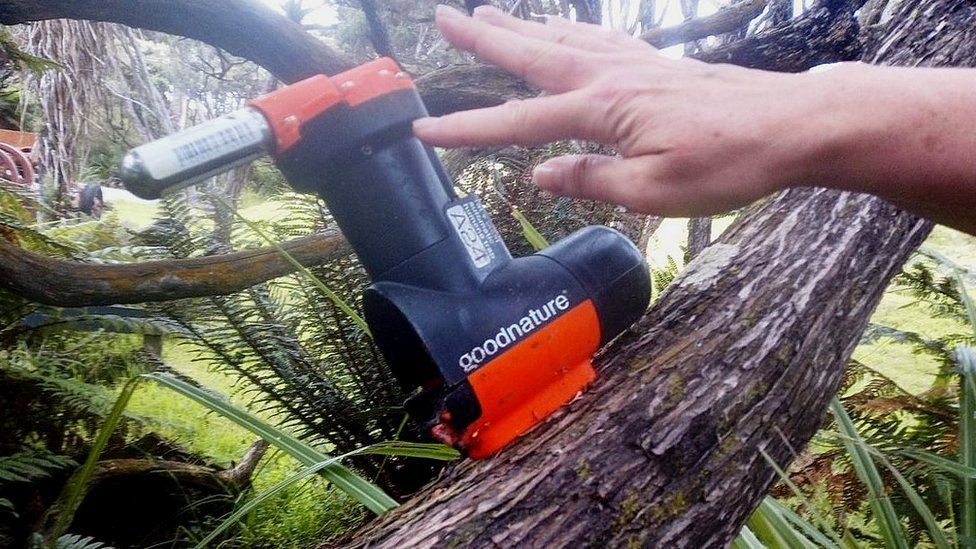
The budget for Predator Free Rakiura is far below that of its Wellington counterpart. However, the level of public support enjoyed by local conservationists is unmatched in the nation. On an island with 440 residents, Sircet claims that in 2020–21, 261 people volunteered their time, a remarkable mobilization rate.
The organization gave away prizes for the most rats caught, the biggest rat, the one with the biggest teeth, and the one with the furriest coat the previous year in addition to giving out traps to schoolchildren.
Children are raised in a community where predator control is very important, according to Sangster. "What seems a little strange to outsiders is a normal part of their daily lives. " .
On the island, Sircet additionally encourages responsible pet ownership. Cats must be neutered and microchipped because they kill birds but are protected from eradication due to their popularity with humans.
Dogs, who frequently mistake kiwi for soft toys, can also be risky. Under a Sircet training program that is voluntary (for owners, that is), an electronic kiwi shocks dogs who become overly friendly with the birds, teaching them to keep their distance. .
An accomplishment is holding the line. Sangster is cautious when asked if there is a chance that Rakiura, a region the size of Greater London, will be predator-free in 27 years. You might land on the Moon if you reach for the stars, she advises.
Conservationists have disagreed on the project's overall viability since 2050. The founder of Zealandia, James Lynch, has concerns due to practicality and financial viability.
He supports getting rid of predators as the ultimate goal. We don't currently have a toolbox for this, which is the issue, according to Lynch. " .
He observes that the majority of native birds can survive without any predators. The few that do, according to him, can survive in urban or offshore sanctuaries. Lynch advises concentrating resources on woodland near fenced areas rather than trying to rid the entire country of pests to increase the survival of birds emerging from the woods.
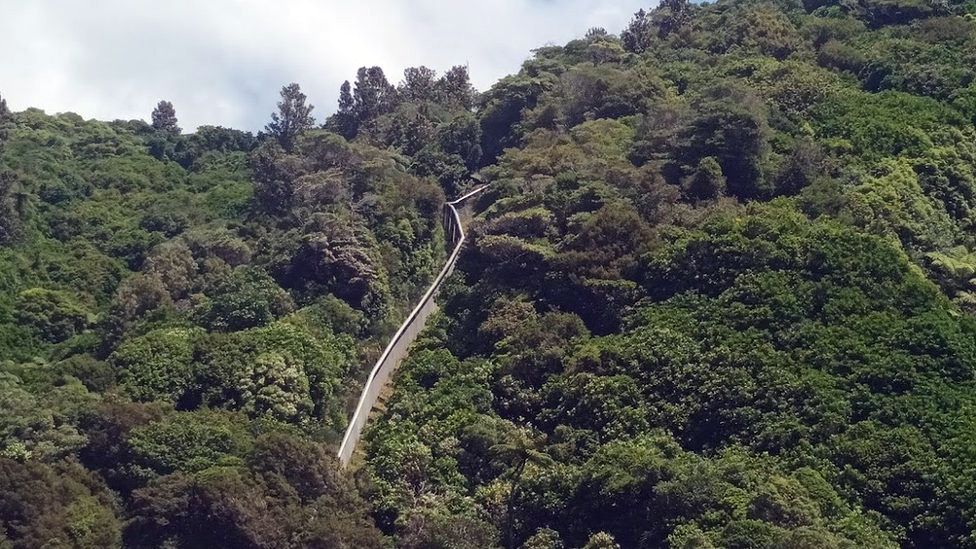
According to him, this idea has proven successful in Wellington and offers the best chance for widespread eradication while tools are still being developed.
Others consider the concept of a predator-free New Zealand to be far-fetched. In the past 150 years, New Zealand has lost every battle against rabbits, deer, and other pests, according to conservation researcher Wayne Linklater.
Campaigns to eradicate sentient, intelligent beings are not only impractical, says Linklater, but they are also morally flawed. "We gathered a lot of resources, people's passion, and carried out great cruelty. How could we be so complacent about pain?
Linklater is reminded of evangelical zeal by the desire to rid society of evil forces, the widespread mobilization, and the slogans. The movement to eliminate predators, he claims, "depends on demonizing a species and making that species an enemy so that you can kill it.".
Furthermore, who are Homo sapiens, the most invasive mammalian predators and systematic habitat destroyers, to declare total war on the creatures they brought with them?
Linklater suggests allowing communities to set their own biodiversity objectives rather than imposing impractical national targets. While some rats and possums are acceptable in Auckland, Stewart Islanders might prefer to prioritize protecting their kiwis and muttonbirds.

Localized strategies are useless, according to biologist James Russell, who contributed significantly to the scientific justification of the 2050 project. He shrugs, "It's the unambitious, business as usual model.".
He continues by saying that sparing a few birds is a false economy because it will take constant investment to keep predators from coming back. Eradication is expensive, but once you pay for it, it's over. " .
Russell acknowledges that nobody is yet aware of how to complete the task. However, pest-control technology has advanced significantly since the 1960s; who knows what continued investment will accomplish over the next 27 years.
There are no absolute solutions to moral objections. Complex arguments must be weighed by both individuals and societies. According to Russell, New Zealanders have decided that killing some species to save others is the moral thing to do.
It is true that enthusiasm for eradication is currently stronger than opposition.
Dan Coup anticipates the day when he and his coworkers will no longer be needed to catch rats back on the Miramar peninsula. .
You can either invest a significant sum of money up front to capture the final 5% of rats and avoid working again, or you can continue working indefinitely.

